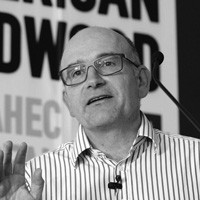Presented by AHEC
August 27th, 2021
This presentation was part of CPD-Live, but no longer offers CPD points. For CPD presentations, click here.
Globally, despite the ongoing efforts of environmentalists and others, deforestation has continued at an alarming rate. According to the World Bank, between 1990 and 2016, 1.3 million square kilometres of forest (an area greater than South Africa) were lost.
While all efforts to reverse this trend – and ensure that only sustainably sourced timbers find their way into our homes and offices – are to be encouraged, it is also critical to identify the most effective of these.
As it stands for specifiers, assessing the sustainability of forest products generally amounts to checking whether they have received forest certifications (such as FSC and PEFC).
The problem here is that these certifications are limited. They can’t easily be applied to all products, such as American Hardwoods grown in the US, where there is clear evidence that hardwood forests are well managed and expanding but where certification is challenging because management units and supply chains are fragmented.
So, what are the alternatives? Beyond certification, are there any emerging assessment methods that let you know if forest products are sustainably sourced and suitable for use?
Presentation: CLICK HERE

Rupert Oliver, Sustainability Consultant, AHEC
Rupert Oliver is an independent forest products consultant and an internationally recognised authority on environmental issues, sustainable forest management and certification. Rupert has a degree in forestry and also worked for a number of years for the TTF in the UK, helping to coordinate the Forest Forever campaign. Rupert is a popular speaker at wood forums and conferences all over the world and is a regular contributor to the AHECconvention.

George White, Certification Consultant, AHEC
George White, currently independent consultant working with AHEC on development of new sustainability verification procedures, also Global Timber Forum Director (responsible for Projects, Oversight & Governance), and formerly Head of WWF Global Forest & Trade Network (GFTN – working in more than 30 countries with over 300 companies employing over 50 staff to develop FSC certification of the forests they manage or to apply a stepwise approach to responsible sourcing of forest products), before that environmental sourcing specialist for leading UK retailer Sainsbury’s, developing and implementing responsible sourcing policies and associated management processes for Sainsbury’s, Shaw’s and Homebase.
INDESIGN is on instagram
Follow @indesignlive
A searchable and comprehensive guide for specifying leading products and their suppliers
Keep up to date with the latest and greatest from our industry BFF's!

Gaggenau’s understated appliance fuses a carefully calibrated aesthetic of deliberate subtraction with an intuitive dynamism of culinary fluidity, unveiling a delightfully unrestricted spectrum of high-performing creativity.

BLANCOCULINA-S II Sensor promotes water efficiency and reduces waste, representing a leap forward in faucet technology.

Schneider Electric’s new range are making bulky outlets a thing of the past with the new UNICA X collection.

It’s widely accepted that nature – the original, most accomplished design blueprint – cannot be improved upon. But the exclusive Crypton Leather range proves that it can undoubtedly be enhanced, augmented and extended, signalling a new era of limitless organic materiality.

The 2025 INDE.Awards Shortlist showcases the very best architecture and design in our Indo-Pacific region.

Designer and maker, Josh Carmody, is creating heritage through craft with the Lost Profit Workshop.
The internet never sleeps! Here's the stuff you might have missed

Davenport Campbell’s Neill Johanson shares insights from WORKTECH25 and the impact of AI on the workplace experience.

Fine art that informs commercial design has authenticity and soul, and Ross Didier is at the forefront of creativity that is infused with passion.